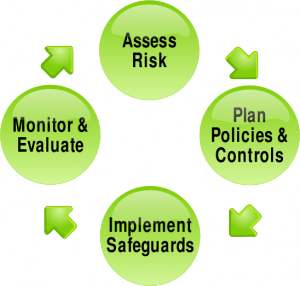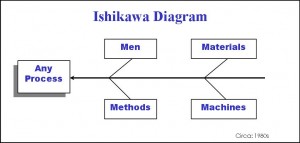
How many times have you inherited a project and had major problems with a supplier who was selected because they were cheap !
This perception of “cheap” is normally based purely on price and takes absolutely no account of the total cost of ownership of the product or service.
Selecting suppliers purely on price is never a good idea.
Here are some great tips from Businesslink:-
What you should look for in a supplier
There are a number of key characteristics that you should look for when identifying and short listing possible suppliers. Good suppliers should be able to demonstrate that they can offer you the following benefits.
Quality and reliability
The quality of your supplies needs to be consistent – your customers associate poor quality with you, not your suppliers. Equally, if your supplier lets you down with a late delivery or faulty supplies, you may let your customer down.
Speed and flexibility
Being able to place frequent, small orders lets you avoid tying up too much working capital in stock. Flexible suppliers help you respond quickly to changing customer demands and sudden emergencies.
Value for money
The lowest price is not always the best value for money. If you want reliability and quality from your suppliers, you’ll have to decide how much you’re willing to pay for your supplies and the balance you want to strike between cost, reliability, quality and service.
Strong service and clear communication
You need your suppliers to deliver on time, or to be honest and give you plenty of warning if they can’t. The best suppliers will want to talk with you regularly to find out what needs you have now and how they can serve you better in the future.
Financial security
It’s always worth making sure your supplier has sufficiently strong cashflow to deliver what you want, when you need it. A credit check will help reassure you that they won’t go out of business when you need them most.
Always remember the difference between price & cost
chris@projectsguru.co.uk
www.projectsguru.co.uk


; Keep up to date by becoming a facebook
fan

 This week one of the busiest Motorways in England was closed for 3 days because of a fire in a scrap yard adjoining the motorway. In the ensuing debate questions were raised about the need to prevent such a thing happening again, including closing all potential threats in sites adjoining Motorways.
This week one of the busiest Motorways in England was closed for 3 days because of a fire in a scrap yard adjoining the motorway. In the ensuing debate questions were raised about the need to prevent such a thing happening again, including closing all potential threats in sites adjoining Motorways.![]()


 5o years ago today Yuri Gagarin became the first man in space when he orbited the earth in his Vostok spacecraft, winning the cold war race and catapulting himself into the annals of history.
5o years ago today Yuri Gagarin became the first man in space when he orbited the earth in his Vostok spacecraft, winning the cold war race and catapulting himself into the annals of history.
 On a recent business trip to Geneva I flew from Leeds Bradford Airport in the North of England. I checked through on time and headed for the gate to be met by a scene of organised chaos. The queue was very long and heaving with Schoolkids on exchange visits, holidaymakers and business people. At the very end of this long queue we were given a tray into which we had to load our laptops, keys, belts etc as part of the security screening process. This was undoubtedly the bottleneck and by the time I got through security to the Gate I was informed by an attendant that I may well have missed the flight. I was then subjected to admonishment, had I not heard the attendants calling people through for the Geneva flight – “No” , I hadn’t heard anything in melee – anyway to cut a long story short I caught my flight but not without a lot of hassle and stress.
On a recent business trip to Geneva I flew from Leeds Bradford Airport in the North of England. I checked through on time and headed for the gate to be met by a scene of organised chaos. The queue was very long and heaving with Schoolkids on exchange visits, holidaymakers and business people. At the very end of this long queue we were given a tray into which we had to load our laptops, keys, belts etc as part of the security screening process. This was undoubtedly the bottleneck and by the time I got through security to the Gate I was informed by an attendant that I may well have missed the flight. I was then subjected to admonishment, had I not heard the attendants calling people through for the Geneva flight – “No” , I hadn’t heard anything in melee – anyway to cut a long story short I caught my flight but not without a lot of hassle and stress. How many times have you worked on projects where the product spec is not defined?
How many times have you worked on projects where the product spec is not defined?
 As a rough guide a
As a rough guide a  The recent internal memo “leaked” from Nokia & published on technology website Endgadget.com demonstrates the need for any corporation, but particularly those in the Technology arena, to have a continuous stream of
The recent internal memo “leaked” from Nokia & published on technology website Endgadget.com demonstrates the need for any corporation, but particularly those in the Technology arena, to have a continuous stream of  1) Create Space – nothing clouds judgement more than pressure to create a fast solution. Tell stakeholders you are assessing the situation and will provide an update in 1 weeks time.
1) Create Space – nothing clouds judgement more than pressure to create a fast solution. Tell stakeholders you are assessing the situation and will provide an update in 1 weeks time.
 chris@projectsguru.co.uk
chris@projectsguru.co.uk